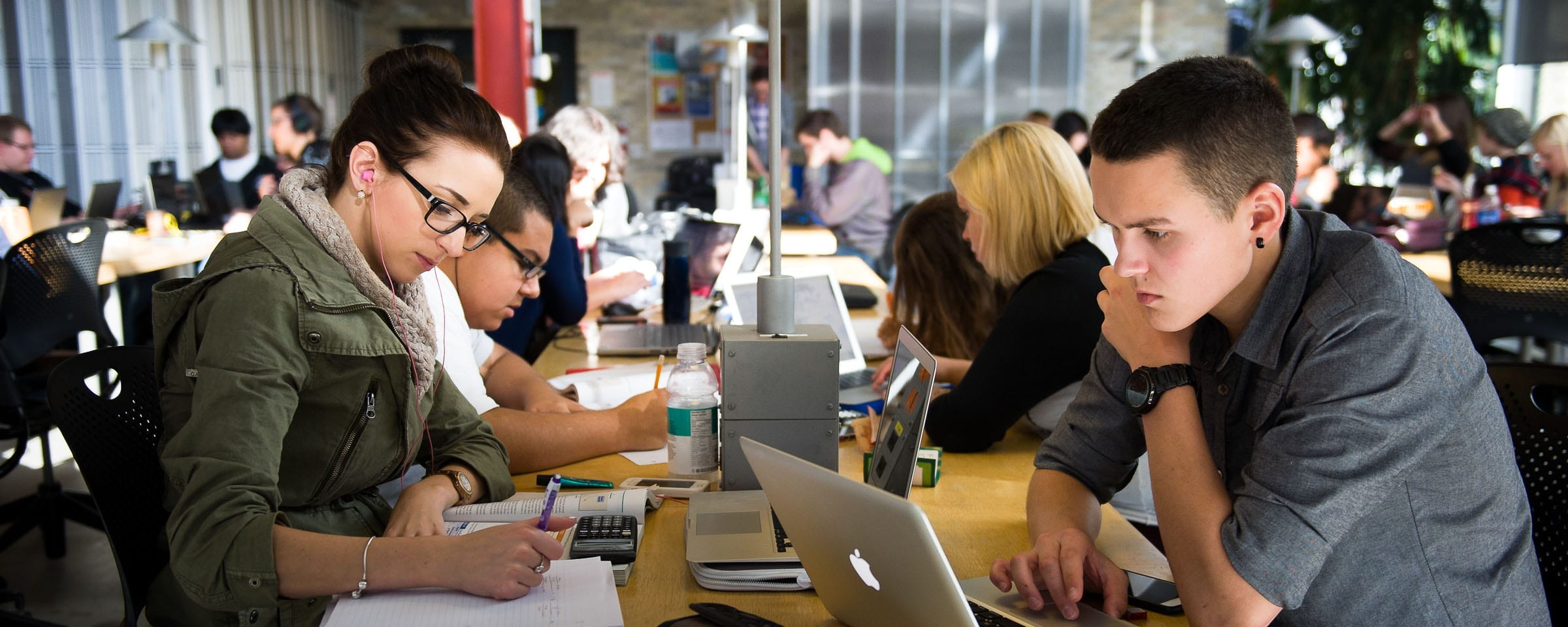Service-Learning as a Pedagogical Tool
Taking the learning out of the classroom and out of our control is scary, but I can tell you from experience that it is worth it.
Over the past two years, I integrated the College’s Step Out of Your Box (SOYB) program into my Gender Studies for Health Professionals course for the Nursing department. SOYB helps students explore a dimension of diversity different from their own. The program uses service-learning as a pedagogical tool, taking students out of the classroom and into the real world. Students complete 7 hours of volunteer time at a community organization of their choice, coordinate with the organization to plan a leave-behind project, and then write a reflection on their experience. What better way to connect students with course material than to have them experience it first-hand, give something back, and reflect on it all? As a bonus, students can submit their reflections to be eligible for four $500 awards.
Although the prospect of including service-learning into my course was unfamiliar and somewhat intimidating, implementation was surprisingly easy. I worked with the RRC mentorship coordinator to implement the program as an alternate assignment to a paper within the constraints of a 12-week term. We also adapted SOYB to the objectives of the course by stipulating that the dimension of diversity had to connect with gender and including a couple nursing-specific reflection questions. I then created an assignment guideline and a rubric to evaluate the program requirements and depth of reflection. The mentorship coordinator joined my class on day 1 to introduce SOYB, at which point I turned control of the learning experience over to the students, under her guidance. Implementing SOYB did not add to my workload. With the initial materials in place, it allowed me to focus on other course objectives while the students focused on developing their power skills and cultural competence.
With its self-directed nature, service-learning is shown to increase self-efficacy and responsibility as well as elevate student success. Students were not only learning about the communities they were volunteering with; they were also learning about themselves. What better way for a student to face their fears in an ever-changing world? What better way for students to check their own privilege? As an instructor, I can give my students readings, lectures, and discussions. With the help of SOYB, I can also give my students that ‘a-ha’ moment when theory comes to life. As one student put it, “I finished this experience not learning what I wanted but learning what I needed.”
The College-wide learning outcomes emphasize that community engagement is crucial to the learning process, and students must be able to collaborate and work in a growingly diverse country. Learning about diversity can often be difficult, though. The theoretical can stereotype and generalize. Lectures, class discussions, and guest speakers are incredibly useful, but often being surrounded by or exposed to diversity does not mean that we internalize it or appreciate it. Through SOYB, students are meeting individuals different from themselves, face to face, in their environment. They are talking to and learning from individuals that they might never have otherwise interacted with. They get to humanize someone even if they don’t understand or agree with them. Service-learning has been shown to increase empathy and cultural competence. Students can collaborate with community organizations toward social inclusion, social justice, and building a better future, while also meeting the College values of learning, respect, inclusiveness, integrity, and service to community.
The first term that I offered SOYB as an alternate assignment, most of the students chose it. Since then, every single student has chosen service-learning over writing a paper. From the growing popularity of the program and the comments in their reflections, students see the value of this experience. For me, it has been a shift in my perspective of my role as an instructor. I had to let go of control over what and how exactly a student will learn.
As instructors, we’re constantly looking for new and innovative ways to get our content across to students. SOYB won’t replace course content, but it will reinforce it. It is experientially robust and employer relevant. Our students are diverse and their future employers, coworkers, and clients are diverse. Whether as an alternate assignment or a small portion of work placement focused on social responsibility, the Step Out of Your Box program is a rewarding addition to any course.
Instructors:
To find out how to integrate SOYB into your course, contact the mentorship coordinator, Vera Godavari, at soyb@rrc.ca or visit https://www.rrc.ca/diversity/mentorship-awards/step-out-of-your-box/
For more on the experience of using SOYB as an alternate course assignment, contact Meagen Chorney at machorney@rrc.ca
Students:
Interested in taking part in the Step Out of Your Box program?
It’s open to all students even if you’re not in a course integrating it. Contact Vera at soyb@rrc.ca or visit https://www.rrc.ca/diversity/mentorship-awards/step-out-of-your-box/ to sign up today.
Post written by Meagen Chorney – Nursing Instructor
and Vera Godavari – Mentorship Coordinator
